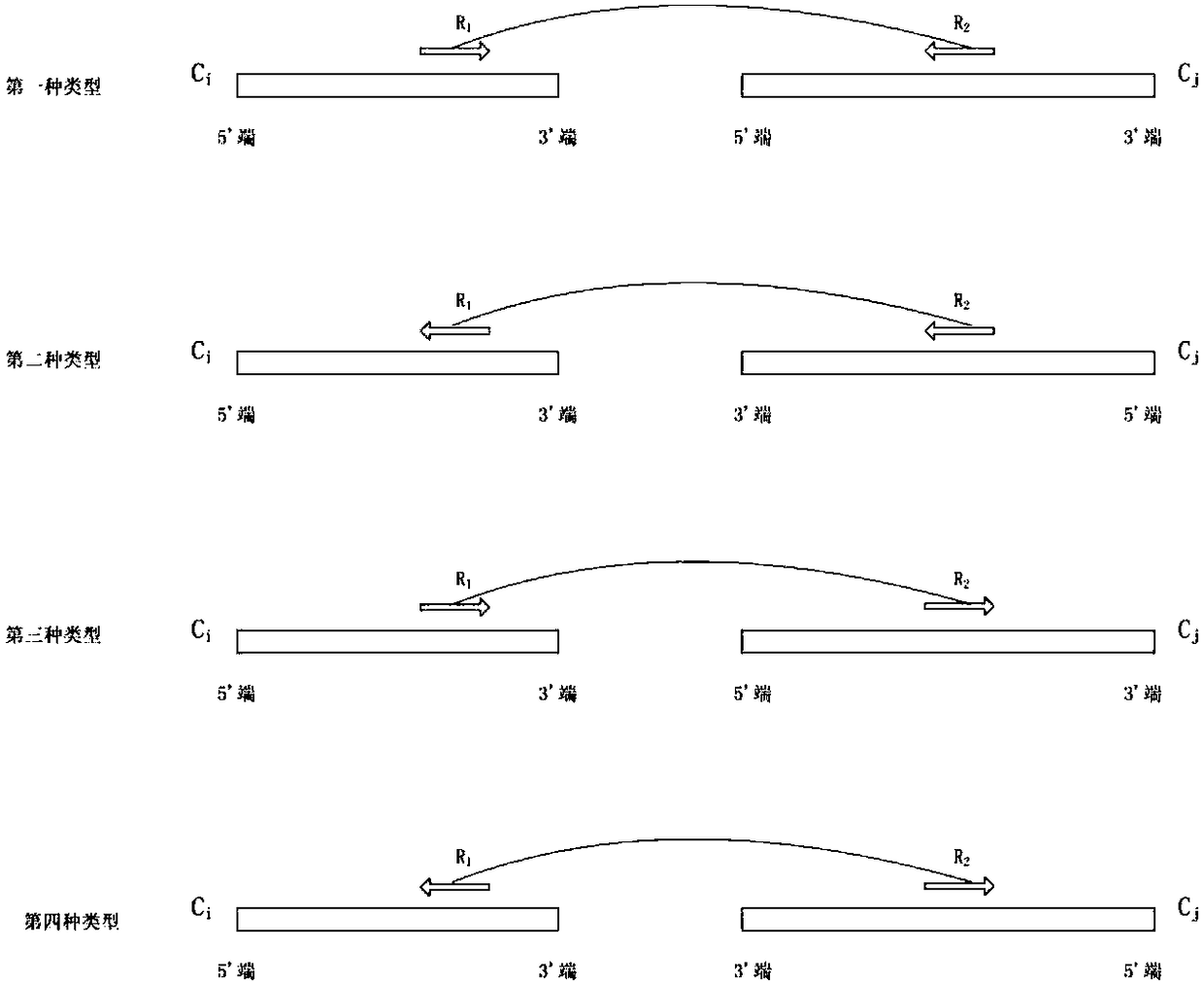A scaffolding method based on the statistical characteristics of the double-ended read insert size
A technique of statistical features and readings, applied in the field of bioinformatics, which can solve the problem of removing and ignoring the characteristics of long nodes and short nodes.
- Summary
- Abstract
- Description
- Claims
- Application Information
AI Technical Summary
Problems solved by technology
Method used
Image
Examples
Embodiment Construction
[0093] Such as figure 1 Shown, the concrete realization process of the present invention is as follows:
[0094] 1. Pretreatment
[0095] In this method, it is assumed that in paired-end reads, the left and right reads are not in the same orientation, and that the right read is to the right of the left read relative to the 5' to 3' orientation of the left read.
[0096] The contig file and the comparison result file are used as input data. In the alignment result file, due to repeated regions and sequencing errors, a read often has multiple alignment position information. For each reading, this method only retains the alignment position information with the highest alignment score, and removes all the remaining non-optimal alignment position information. According to the alignment position information of all reads, the read coverage of each position on each contig can be obtained, that is, how many aligned reads cover a certain base position. At the same time, the average ...
PUM
 Login to View More
Login to View More Abstract
Description
Claims
Application Information
 Login to View More
Login to View More - R&D
- Intellectual Property
- Life Sciences
- Materials
- Tech Scout
- Unparalleled Data Quality
- Higher Quality Content
- 60% Fewer Hallucinations
Browse by: Latest US Patents, China's latest patents, Technical Efficacy Thesaurus, Application Domain, Technology Topic, Popular Technical Reports.
© 2025 PatSnap. All rights reserved.Legal|Privacy policy|Modern Slavery Act Transparency Statement|Sitemap|About US| Contact US: help@patsnap.com



